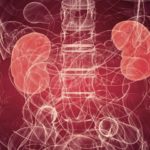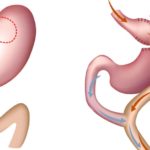Vasectomy: Who needs, How does it work, Is it effective, Advantages
Vasectomy is a minor surgery performed on men for the prevention of pregnancy. It is a safe and effective procedure and it’s also a permanent method of sterilization.
Who needs a vasectomy?
There are many methods of birth control for men. Some are temporary like abstinence and use of condoms; while a vasectomy is a permanent method. If one wants to delay pregnancy or plans spacing between childbirth, a temporary method is used. On the other hand, if a couple has completed their family of one or two children, and the children are healthy, they can opt for a permanent method. The permanent method in females is called tubectomy and in males is a vasectomy. So, surgery in one of the two serves the purpose.
How does a vasectomy work?
The sperms are produced in the two testes located in the scrotum. They pass through two fine tubes called vasa deferentia to the prostate and mix with seminal fluid before ejaculation. During a vasectomy, the surgeon cuts and blocks both of these tubes because of which the sperms are absent in the ejaculate. Hence pregnancy is prevented.
Is vasectomy effective?
When correctly performed, it is almost 100% effective. Rarely, the procedure may fail; in these people, recanalization may occur because of which sperms may pass across the site of surgery and result in pregnancy.
How is the vasectomy performed?
This surgery is performed under local anesthesia. Lignocaine is injected and a small incision of 5 to 10 mm is made on either side of the scrotum. The vas deferens is exposed, then 1 to 2 cm segment is removed and both cut ends are tied with sutures. After ensuring that there is no bleeding, the skin cut is stitched. It takes about 20 to 30 minutes to complete this procedure. Then the procedure is repeated on the other side. The small segments of vas deferens are placed in separate tubes containing formalin; their side is marked and is sent for microscopic confirmation. After the surgery, a person is advised not to undergo any heavy exertion for a week. Thereafter one can resume normal work.
What is the NSV technique of vasectomy?
NSV stands for non-scalpel vasectomy. In this method, the scalpel is not used to make an incision but another sharp instrument is used to make a skin puncture. The other steps of surgery are the same as above. The puncture sites are not stitched as it heals spontaneously.
When does vasectomy become effective?
Even after surgery sperms are present in the tubes away from the site of surgery. After a vasectomy, the patient undergoes semen analysis after three months. The semen analysis should have a complete absence of any alive or dead sperm cells. Also, during surgery, a small part of the right and left vas deferens is sent for histological examination to confirm correct surgery. When both these tests are done, a doctor can certify that the vasectomy is effective.
How is semen analysis done?
Semen is collected by masturbation in a sterile container. Then it is examined under a microscope.
Are there any physical effects of vasectomy?
This procedure does not affect sex drive and does not result in weakness of erection. The masculinity is not affected and there is no weakness of any kind after vasectomy. The sex hormone production continues at normal levels. The appearance and amount of ejaculate remain as it was earlier.
Does it prevent sexually transmitted diseases?
No, since the semen is still produced, intercourse can result in the transmission of disease.
What are the other advantages of vasectomy?
There are many other advantages of undergoing this surgery. These include:
- Prevention of hereditary diseases in children with a high risk of cancer
- Prevention of pregnancy if the health of partner is threatened by it
- Surgery for birth control in a female partner is more complicated and can be avoided if the male partner undergoes vasectomy
Vasectomy is a permanent surgical method of birth control performed in males. After completion of the family, this procedure is performed. Very rarely a reversal of this procedure may be required and the chances of its success are very poor. Therefore a decision for undergoing vasectomy should be taken with due care.




























